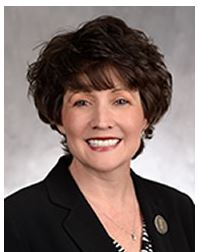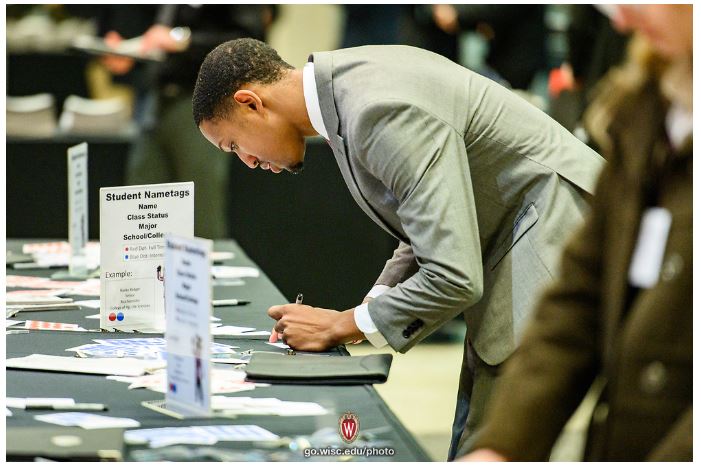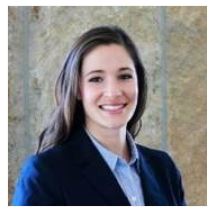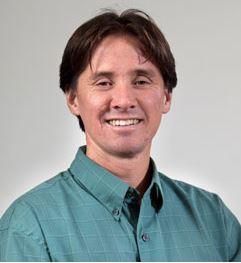New Study Finds Successful Student Internships Require Careful Design, Equitable Access
June 10, 2019 | By Karen Rivedal, WCER Communications

A new study finds 64% of students who don't do internships want to but don't have the time, money or opportunity to take one.
Getting past the basic "yes" or "no" question on college internships – just asking whether a student did one or not – to a deeper understanding of the "whys" and "what-ifs" around these on-the-job experiences is at the heart of a new working paper co-authored by UW-Madison research scientist Matthew T. Hora at the Wisconsin Center for Education Research within the university’s School of Education.
Based on student experiences at three diverse colleges, the paper describes what works in successful internships and provides demographic data on the students who take them. It also identifies key barriers to student participation in internships and recommends that more and differently designed programs be developed to meet student demand in a more equitable way. Among suggested improvements, the report offers a detailed new model to help educators better measure and structure internships.
"Ultimately, we find that internship participation varies substantially across different student groups by race, institution, enrollment status and academic program,” says Hora, director of WCER’s Center for Research on College-Workforce Transitions and an assistant professor of adult teaching and learning in the Division of Continuing Studies.
“But barriers to participation are real and formidable,” Hora adds. “The design of internship programs – especially the role of mentors and supervisors – needs careful attention by educators and employers to increase the prospect of college students having a satisfying and productive experience.”
Improving internships at UW-Parkside and Madison College
At UW-Parkside, one of the three studied institutions, students who do internships through the campus south of Racine mainly report having a good experience – but at the same time, the report found, not enough students overall are doing them, especially among students of color, Chancellor Deborah Ford says.

Deborah Ford
That is something we are working on as an institution,” she says. “We’re not at scale. This study really confirms that for us and shows we need to do a better job of making sure that our growing population of students of color take advantage of the same opportunities for internships as our white students.”
To help accomplish that, UW-Parkside, as a direct result of customized study recommendations, has created a full-time position for a campus-wide internship coordinator. The comprehensive university, which offers signature programs in pre-med and pre-health -- boasting an 89 percent placement rate of its graduates in professional schools – also is spending more on its career services office.
“One of the things we needed to do is improve the consistency of our internships and how they align with students’ curriculum,” Ford explains. “Administratively, we need to make it easier.”
At Madison College, which also was part of the study, Hora’s report recommends the two-year technical/community college place more emphasis on arranging internships for students in its strong liberal-arts transfer program as a means of hands-on career exploration.
"There's a big opportunity (for internships) for students outside of the technical areas,” says Gretchen Rixie, director of Madison College’s advising, career and employment services.
Strong supervisor support, mentoring needed
According to students in the study overall, the most successful internships provide strong supervisor support and mentoring, with meaningful work that aligns closely with their academic programs. Overall, women and students with high grade-point averages are most likely to do internships, the paper finds, but more research and inquiry is needed to determine precisely why that is, Hora said.

A student fills out a name card at a career/internship fair this spring at the Kohl Center. A new CCWT study of three diverse institutions shows students of color lag white students in internship participation.
“There’s no direct or easy implication or recommendation we can attribute to this fact, other than to recognize we need to think more deeply about how we’re setting internships up, who’s taking them and why,” Hora says. “Why aren’t students with median or low GPAs taking them? Why aren’t more male students taking them?”
Paradoxically, the report says the three most significant barriers to internship participation – conflicts with work schedules, a lack of internships in a student’s field of study or region, and the prevalence of no- or low-pay internships – while “unfortunate” for all, were especially problematic for those who arguably could benefit most from gaining valuable professional experience: low-income and first-generation college students, and students of color. Students who work the most hours outside college and those who attend only part-time also find it difficult to find time for internships, the study says.
Hora says one of the report’s most surprising findings was that 64 percent of the students without internships said they wanted to do one but were discouraged by one of the key participation barriers.
"We didn’t expect to see such a large number of students who wanted to participate in an internship but couldn’t,” says Hora. “We need to recognize internships simultaneously can be a positive, transformative experience for some students and a vehicle for reproducing inequality for others.”
More resources, better definitions called for
While acknowledging work-based learning is one of the most popular and influential ideas in higher education and workforce development in the world, the study finds that colleges and universities need to invest more resources in career services or faculty-based internship coordination to do internships right and make them a good experience. Hora also says educators must ensure employers clearly understand that internships must be positive educational experiences for students.

Gretchen Rixie
“We can’t just put students into a local company and call it an internship,” Hora says. “We need to do more work. We need to work on the design of the programs themselves, and we need to do a much better job of making these opportunities accessible to all students, so reducing those barriers.”
Prevailing national and alumni surveys on internships also must be more careful about how they define internships and the conclusions they draw from the numbers, the report finds.
“For instance, the question in the National Survey of Student Engagement (NSSE) is rather misleading,” Hora says. “It asks, ‘Did you take an internship or co-op or clinical practice or apprenticeship?’ Those are all really different experiences.”
The paper also describes a “process-oriented model” to help educators develop better internship programs. The model incorporates factors that can make student internship experiences successful or not, such as varying student demographics, life situations and choice of majors; the needs and locations of local labor markets; and the quality of internship duties and responsibilities, mentors and supervisors.
“We’re just discovering that the reasons people take, or do not take, internships are really complex,” Hora says. “Researchers and others involved in studying or measuring the impacts of internships can use the new model in place of the simple yes/no question used in most surveys. For people involved in designing internships, it could be a way to think about both access issues and internship format.”

Matthew T. Hora
The working paper, “Problematizing College Internships,” is based on a survey of nearly 1,100 students, from which 47 students further participated in focus groups. Internship participation was highest at the third studied institution, historically black Claflin University in South Carolina, at 43 percent, followed by 27 percent at UW-Parkside and 26 percent at Madison College.
This paper is the second report on Hora’s overarching College Internship Study, which explores the effects of internships on student outcomes such as college completion, employment and earnings, and career adaptability. WCER researcher Zi Chen and graduate students Emily Parrott and Pa Her worked with Hora to produce the working paper. The researchers also interviewed area employers and faculty members at the three institutions and read related institution-based reports. Study collaborators are Mindi Thompson and Matthew Wolfgram.


